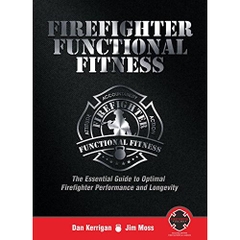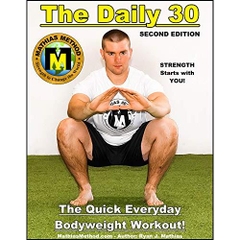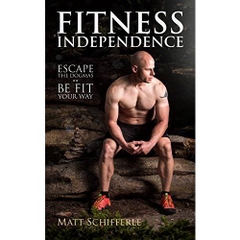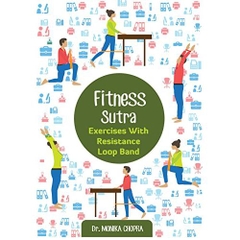-
-
-
Tổng tiền thanh toán:
-
-
Thông tin
-
Tìm sách theo yêu cầu
The multiple stresses of contemporary life—whether from excessive sports play, overwork, or overuse of technology—are increasingly taking a toll on the body. Symptoms range from muscle soreness and pain to pinched nerves to potentially more permanent disabilities, including serious body injuries. One safe, quickly productive way to address the problem is through a simple therapy that can be done anywhere, anytime, and without special equipment: stretching. This new edition of Brad Walker’s best-selling book on the subject presents 135 unique stretching exercises designed to help repair the body and make it more flexible, fit, and relaxed.
The book begins with clear, detailed descriptions of important principles of anatomy and physiology, the benefits of stretching, different forms of stretching, rules to remember, and how to stretch properly. It also focuses on the kinds of stretches that are most helpful in the alleviation or rehabilitation of specific sports injuries. Organized by body part, The Anatomy of Stretching presents stretching exercises in a uniform style accompanied by full-color anatomical illustrations. Equally useful for fitness fans, pro or amateur athletes, coaches and personal trainers, and healthcare practitioners, this new edition contains 20 new stretches; expanded physiology and anatomy information; and a revised numbering system that makes the stretches easier to reference. An expanded appendix includes a longer resources section and a helpful chart describing the top five stretches for each sport and sports injury.
- Link: http://www.amazon.com/Anatomy-Stretching-Second-Illustrated-Rehabilitation/dp/1583943714
The book begins with clear, detailed descriptions of important principles of anatomy and physiology, the benefits of stretching, different forms of stretching, rules to remember, and how to stretch properly. It also focuses on the kinds of stretches that are most helpful in the alleviation or rehabilitation of specific sports injuries. Organized by body part, The Anatomy of Stretching presents stretching exercises in a uniform style accompanied by full-color anatomical illustrations. Equally useful for fitness fans, pro or amateur athletes, coaches and personal trainers, and healthcare practitioners, this new edition contains 20 new stretches; expanded physiology and anatomy information; and a revised numbering system that makes the stretches easier to reference. An expanded appendix includes a longer resources section and a helpful chart describing the top five stretches for each sport and sports injury.
Product Details
Paperback: 192 pages
- Publisher: North Atlantic Books; 2 edition (October 4, 2011)
- Language: English
- ISBN-10: 1583943714
- ISBN-13: 978-1583943717
- Product Dimensions: 10.3 x 7.6 x 0.5 inches
- Shipping Weight: 1.2 pounds (View shipping rates and policies)
- Average Customer Review: 4.7 out of 5 stars See all reviews (71 customer reviews)
- Amazon Best Sellers Rank: #27,975 in Books (See Top 100 in Books)
- #92 in Books > Sports & Outdoors > Coaching > Training & Conditioning
Editorial Reviews
Review
“My favorite part is the illustrations: they're black and white except for the muscle that's being stretched… If you're interested in stretching, improving your range of motion, improving your athletic ability by improving your body's muscles in repairing themselves, or simply to understand what each stretch does for your body, I highly recommend picking up this book. 5 stars.”
—Kari, Reading for Sanity --This text refers to an out of print or unavailable edition of this title.
—Kari, Reading for Sanity --This text refers to an out of print or unavailable edition of this title.
About the Author
Brad Walker is an internationally known stretching and sports injury consultant with 20 years of experience in the health and fitness industry. His other books include The Stretching Handbook and The Anatomy of Sports Injuries. He lives in Queensland, Australia.
Most Helpful Customer Reviews
218 of 225 people found the following review helpfulBy Dr. Ervin Nieves on July 1, 2007
Format: Paperback Verified Purchase
4 Comments Was this review helpful to you? YesNoIf you wish to be a martial artist, there are other stretching books that teach maximum flexibility: e.g. Stretching Scientifically by Thomas Kurz. or yoga books such as YOga: The Iyengar Way by Mira Silva & Schyam Mehta. But if you've hurt your back or other body parts (e.g. legs, shoulders, etc.), then this single volume is a gold mine. I've written several cover stories in Inside Kung Fu and Kung Fu Wushu magazines, and have practiced martial arts since a very early age. I have had perfect splits in life, but became less flexible via neglect. Trying to get back in shape, I hurt my back three years ago and sometimes had trouble bending down (on very bad days) or would rehurt my back when trying to resume running and shaolin kung fu. Fortunately, I taught at a college that had a Ph.D. program in physical therapy so I got free physical therapy for a year. All of the therapy exercises I learned for free are included in Brad Walker's Anatomy of Stretching. In addition, Walker's book contains dozens of wonderful exercises to provide therapy for hurt body parts, and to obtain general flexibility. I visited bookstores to compare the texts, and Walker's book provides wonderful schematic drawings on how the muscles are involved at the very moment of each specific stretch. Unlike other stretching anatomy books, Walker's provides a specific itemization of how to do the exercise, what body part is affected, what injury it treats, what sport it's good for, and when to avoid the stretch if you have a particular injury. It's the best diagrammed text around. I would recommend buying this book with a couple of other texts that are equal to Walker's in many respects (and sometimes better, sometimes worse):
Two books by Kit Laughlin:
1. Stretching & Flexibility, and
2. Overcome Neck & Back Pain.
You can order DVDs from Australia from Laughlin's website. Kit even emailed me to answer my stretching queries.
3. Back Care Basics by Mary Pullig Schatz, M.D. Dr. Schatz combines knowledge in injury science with expertise in Iyengar yoga. It's a wonderful text for injured practitioners.
4. The Stark Reality of Stretching, by Dr. Steven D. Stark. Dr. Stark presents a wonderful theory of stretching that argues convincingly that the best way to stretch is to avoid any stretches that load the specific muscle groups you are trying to stretch. He also demonstrates how we injure ourselves unwittingly: e.g. by running with a stride that is either too short, or too long. His research is a bit dated, but logical and convincing.
5. Yoga: The Iyengar Way (authors mentioned above).
Remember NEVER TO BOUNCE HARD WHEN STRETCHING, ESPECIALLY IF YOUR BACK IS INJURED. As long as you stretch everyday, you should gently heal your back.
Stretching one's back using a "half therapy roll" available at medical supply stores is useful if you have lower lumbar injury, but get diagnosed by a top notch physical therapist. Unlike general medical practitioners, they know the body much better and know the excercises to heal the back. The function of a regular medical doctor is simply to authorize x-rays to ensure you don't have unusual injuries: e.g. spinal/skeletal, herniated disks, torn muscles, dislocated ligaments and torn tendons, etc. Once you've excluded extreme abnormalities, a good stretching book can do wonders for your back and other body parts.
Back pain is due to muscle imbalance and slight injuries. Scarred muscle tissue gets tight and one needs to stretch those tissues to prevent spasms. These books, written often by medical doctors, are a great adjunct to qualified medical care.
For general back care, buy:
6. the Second edition of Mike Hage's THE BACK PAIN BOOK, REVISED 2ND EDITION.
Hage covers everything from how to bend properly when picking up objects to sitting correctly on a toliet to prevent reinjuring or weakining one's back. We cause injury to ourselves gradually until that single extra straw one day breaks our camel's back.
Without question, Walker's ANATOMY OF STRETCHING, is one of the best in the market. There is no single perfect book, but the relatively short list I've constructed is all you need. They might save you thousands of dollars on professional physical therapy and provide you with healthy restful flexibility and relief from unnecessary pain.
Two books by Kit Laughlin:
1. Stretching & Flexibility, and
2. Overcome Neck & Back Pain.
You can order DVDs from Australia from Laughlin's website. Kit even emailed me to answer my stretching queries.
3. Back Care Basics by Mary Pullig Schatz, M.D. Dr. Schatz combines knowledge in injury science with expertise in Iyengar yoga. It's a wonderful text for injured practitioners.
4. The Stark Reality of Stretching, by Dr. Steven D. Stark. Dr. Stark presents a wonderful theory of stretching that argues convincingly that the best way to stretch is to avoid any stretches that load the specific muscle groups you are trying to stretch. He also demonstrates how we injure ourselves unwittingly: e.g. by running with a stride that is either too short, or too long. His research is a bit dated, but logical and convincing.
5. Yoga: The Iyengar Way (authors mentioned above).
Remember NEVER TO BOUNCE HARD WHEN STRETCHING, ESPECIALLY IF YOUR BACK IS INJURED. As long as you stretch everyday, you should gently heal your back.
Stretching one's back using a "half therapy roll" available at medical supply stores is useful if you have lower lumbar injury, but get diagnosed by a top notch physical therapist. Unlike general medical practitioners, they know the body much better and know the excercises to heal the back. The function of a regular medical doctor is simply to authorize x-rays to ensure you don't have unusual injuries: e.g. spinal/skeletal, herniated disks, torn muscles, dislocated ligaments and torn tendons, etc. Once you've excluded extreme abnormalities, a good stretching book can do wonders for your back and other body parts.
Back pain is due to muscle imbalance and slight injuries. Scarred muscle tissue gets tight and one needs to stretch those tissues to prevent spasms. These books, written often by medical doctors, are a great adjunct to qualified medical care.
For general back care, buy:
6. the Second edition of Mike Hage's THE BACK PAIN BOOK, REVISED 2ND EDITION.
Hage covers everything from how to bend properly when picking up objects to sitting correctly on a toliet to prevent reinjuring or weakining one's back. We cause injury to ourselves gradually until that single extra straw one day breaks our camel's back.
Without question, Walker's ANATOMY OF STRETCHING, is one of the best in the market. There is no single perfect book, but the relatively short list I've constructed is all you need. They might save you thousands of dollars on professional physical therapy and provide you with healthy restful flexibility and relief from unnecessary pain.
20 of 21 people found the following review helpfulBy Annie MacKenzie on August 21, 2009
Format: Paperback Verified Purchase
A light weight book, 165 pages which cover 114 stretches. There are 200 detailed sketch style pictures of men and women in different stretches. There are 15 color coded chapters with good sized illustrations on nearly every page. Pictures are sketched very accurately in black, white and shades of gray and arranged in chapters by body area. They show the primary and secondary muscles that are being worked, muscles are colored in shades of pink and red and really pop out from the page. An instant understanding of the body part being worked can be gained with a glance.
Brad Walker's "The Anatomy of Stretching" has much more detail and information than a similar book "stretching Anatomy" by Arnold G Nelson and Jouko Kokkonen. I bought both books and I like the Nelson book well enough, but for an additional $5 or so I would suggest Walker's book is a better buy, like a grown up version of the Nelson book. More bang for your buck, much more information, a very detailed index describing every stretch which saves time locating the info.
Each stretch is broken down into 5 paragraphs. "Technique; Muscles being stretched; Sports that benefit from this stretch; Common problems and additional information for performing this stretch correctly". Lastly "Complimentary stretch". This just gives a page number to refer back to for a complimentary release stretch. There is a 3 page glossary of medical terms for injuries ranging from Ankylosing spondylitis to Trochanteric bursitis. An Appendix of sports and page numbers to access relevant stretches, Similar to Bob Anderson's book on "Stretching".
A very nice book to have in your personal library for fitness professionals or yogi's looking to stretch out any physical imbalances, (for all yoga students and teachers out there, I would suggest an excellent book, "Yoga anatomy" by Lesley Kaminoff). For athletes or anyone wanting to gain a better understanding of their body. A good tool for Massage therapists educating their clients or describing where work will be done, I like to show the client the illustrations of the muscles that will be worked on so they gain a deeper understanding of how to free up any physical restrictions.
Brad Walker's "The Anatomy of Stretching" has much more detail and information than a similar book "stretching Anatomy" by Arnold G Nelson and Jouko Kokkonen. I bought both books and I like the Nelson book well enough, but for an additional $5 or so I would suggest Walker's book is a better buy, like a grown up version of the Nelson book. More bang for your buck, much more information, a very detailed index describing every stretch which saves time locating the info.
Each stretch is broken down into 5 paragraphs. "Technique; Muscles being stretched; Sports that benefit from this stretch; Common problems and additional information for performing this stretch correctly". Lastly "Complimentary stretch". This just gives a page number to refer back to for a complimentary release stretch. There is a 3 page glossary of medical terms for injuries ranging from Ankylosing spondylitis to Trochanteric bursitis. An Appendix of sports and page numbers to access relevant stretches, Similar to Bob Anderson's book on "Stretching".
A very nice book to have in your personal library for fitness professionals or yogi's looking to stretch out any physical imbalances, (for all yoga students and teachers out there, I would suggest an excellent book, "Yoga anatomy" by Lesley Kaminoff). For athletes or anyone wanting to gain a better understanding of their body. A good tool for Massage therapists educating their clients or describing where work will be done, I like to show the client the illustrations of the muscles that will be worked on so they gain a deeper understanding of how to free up any physical restrictions.
XEM CHI TIẾT TẠI AMAZON.COM
- Thông tin chi tiết
- Mục lục
- Đánh giá & bình luận của người mua
- Những cuốn sách cùng chủ đề hoặc có liên quan
Tại web chỉ có một phần nhỏ các đầu sách đang có nên nếu cần tìm sách gì các bạn có thể liên hệ trực tiếp với Thư viện qua Mail, Zalo, Fanpage nhé
Đăng ký nhận tin qua email
Hãy đăng ký ngay hôm nay để nhận được những tin tức cập nhật mới nhất về sản phẩm và các chương trình giảm giá, khuyến mại của chúng tôi.












